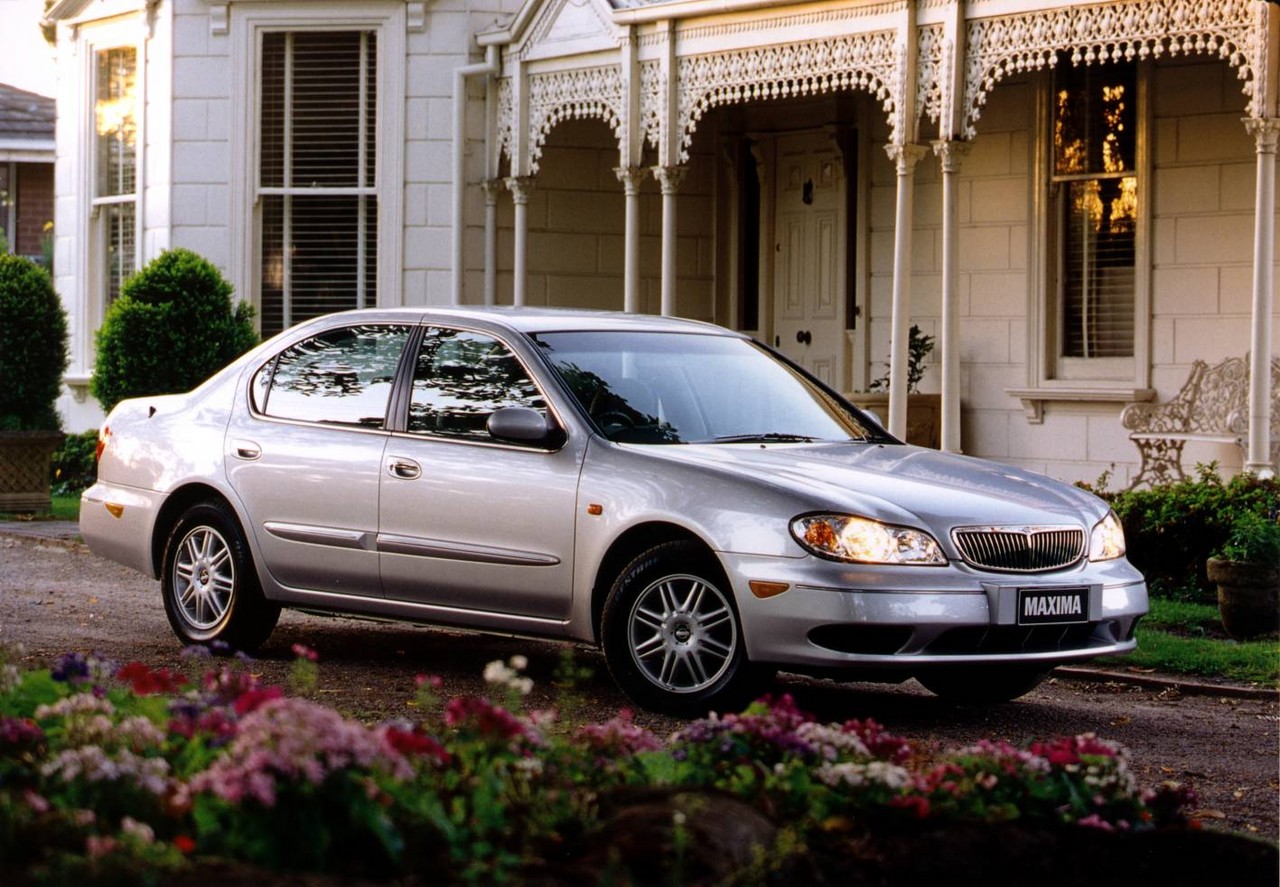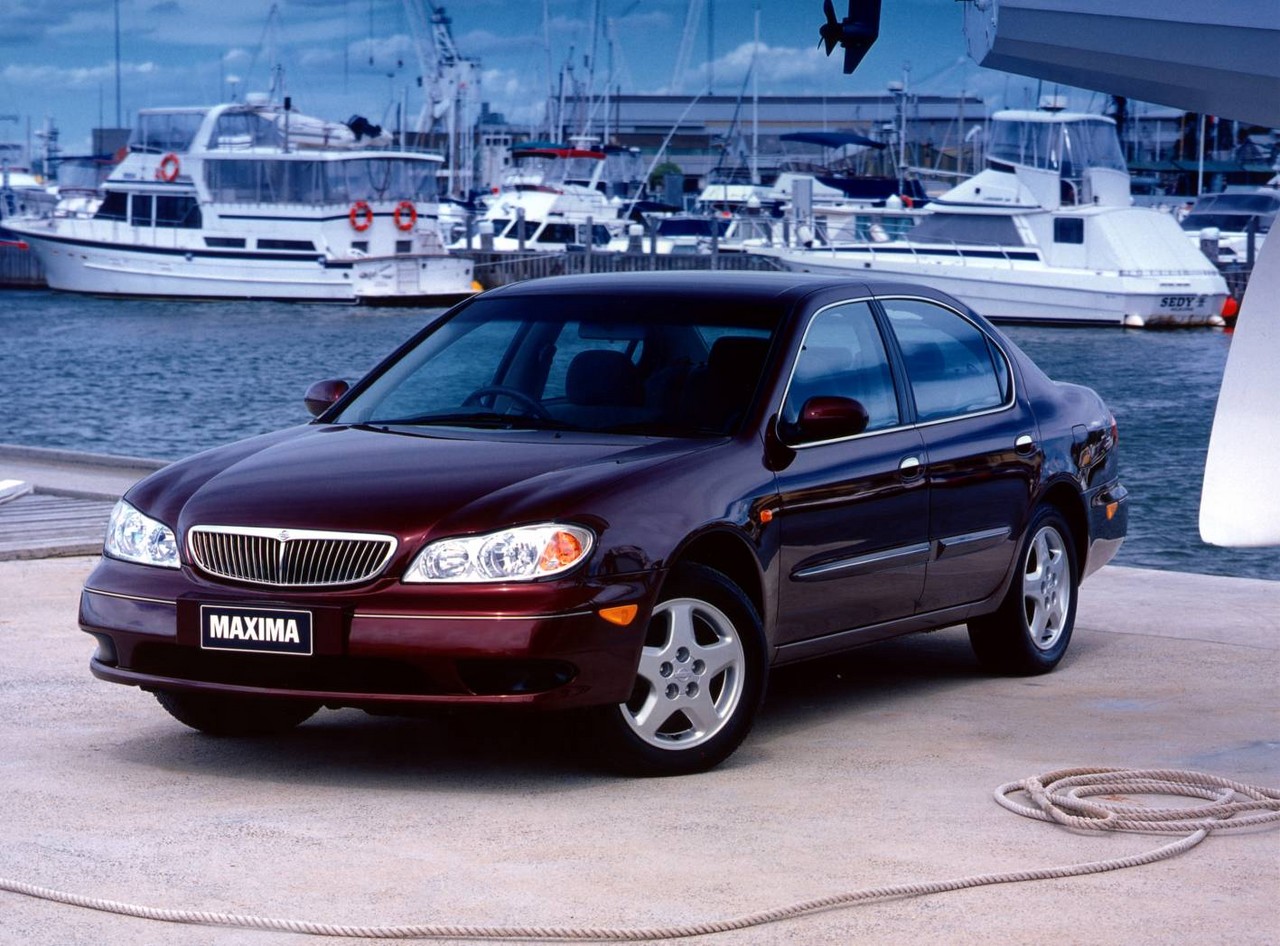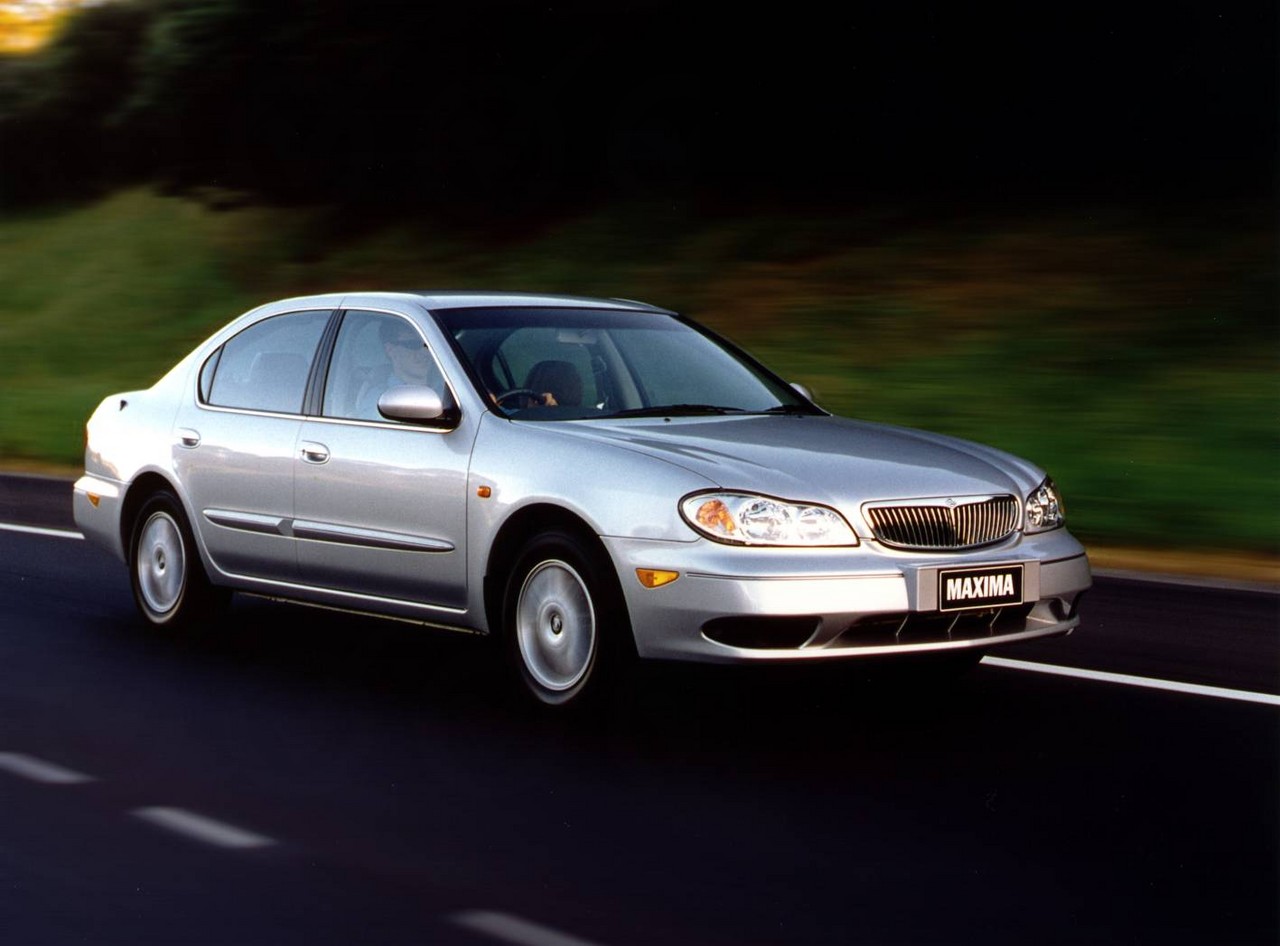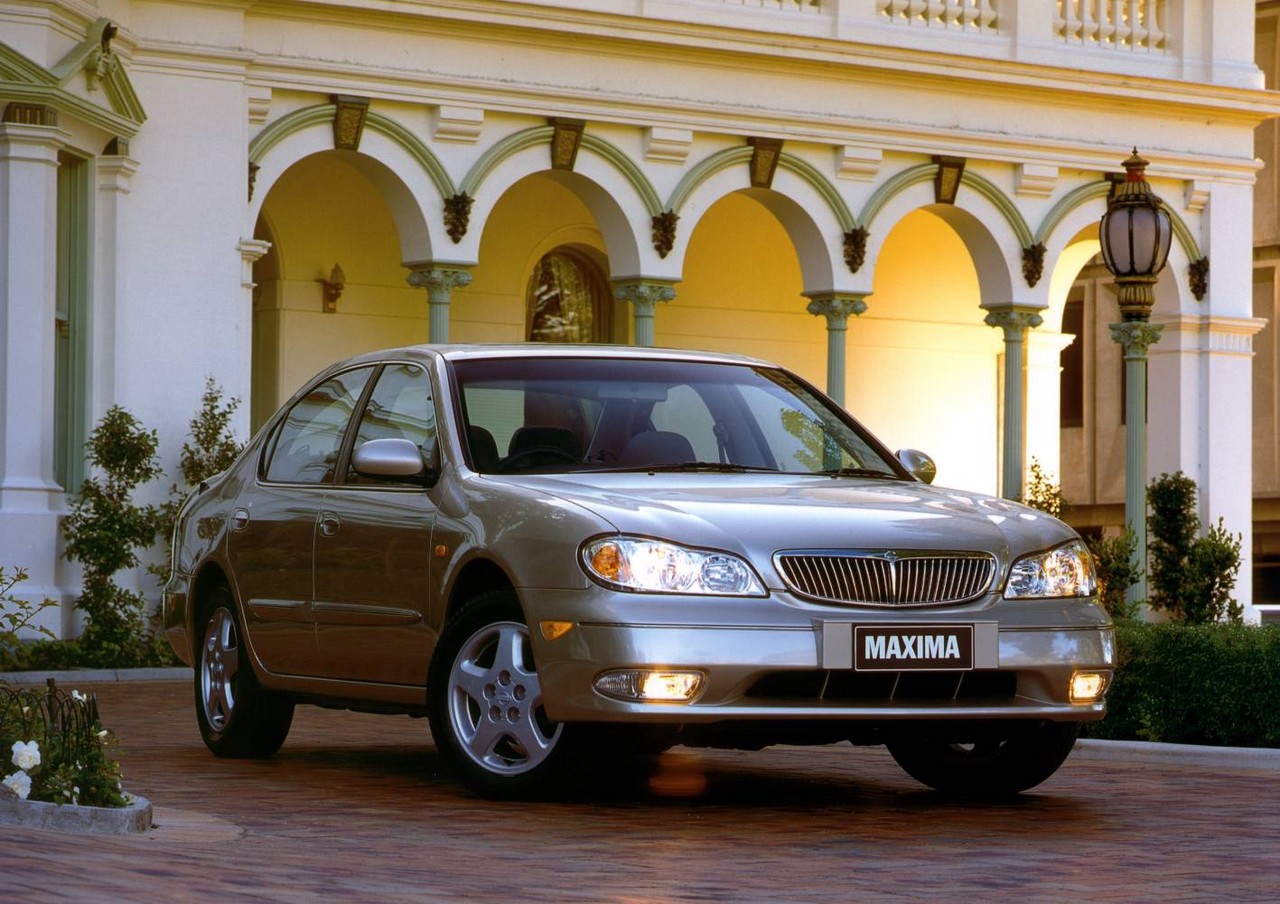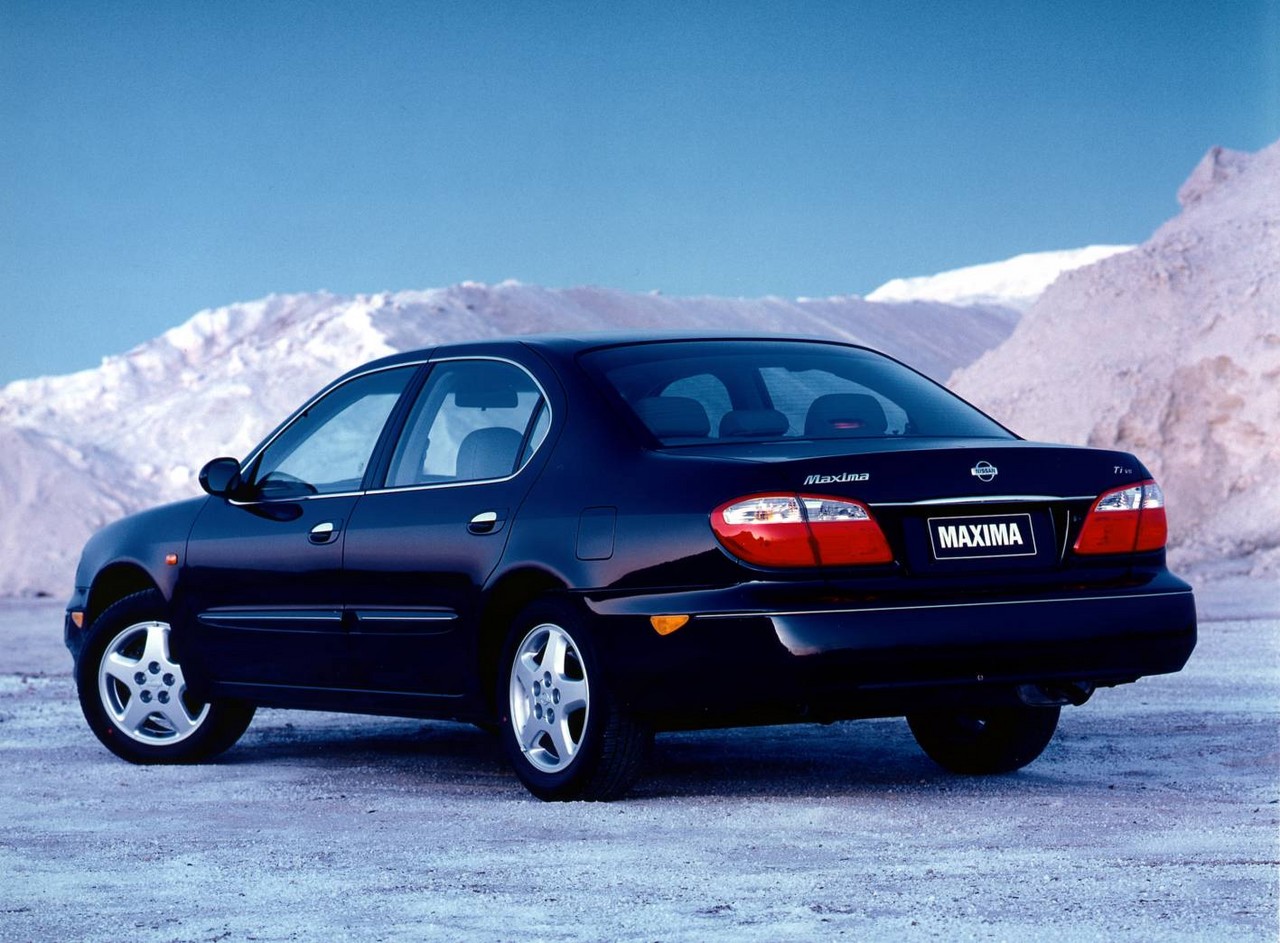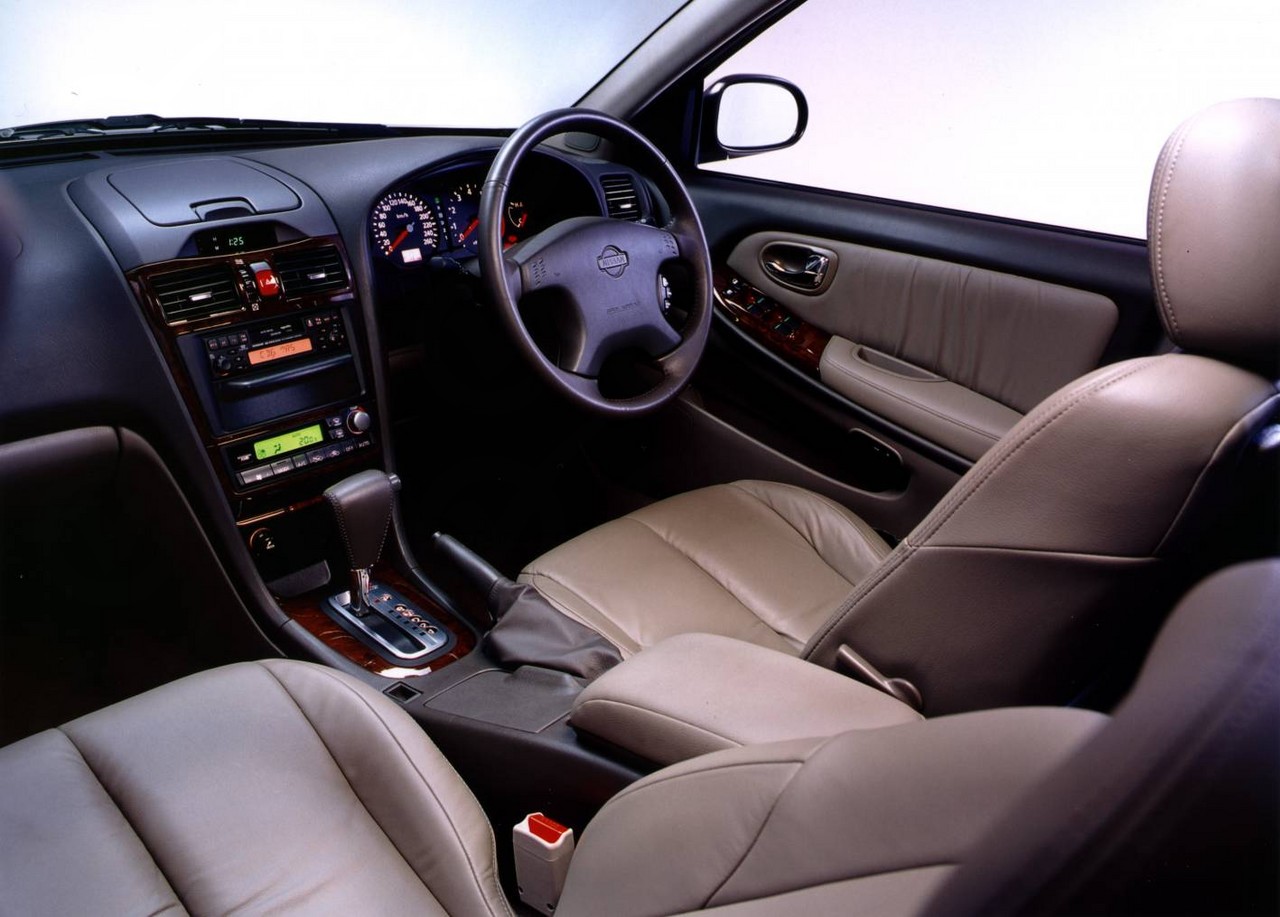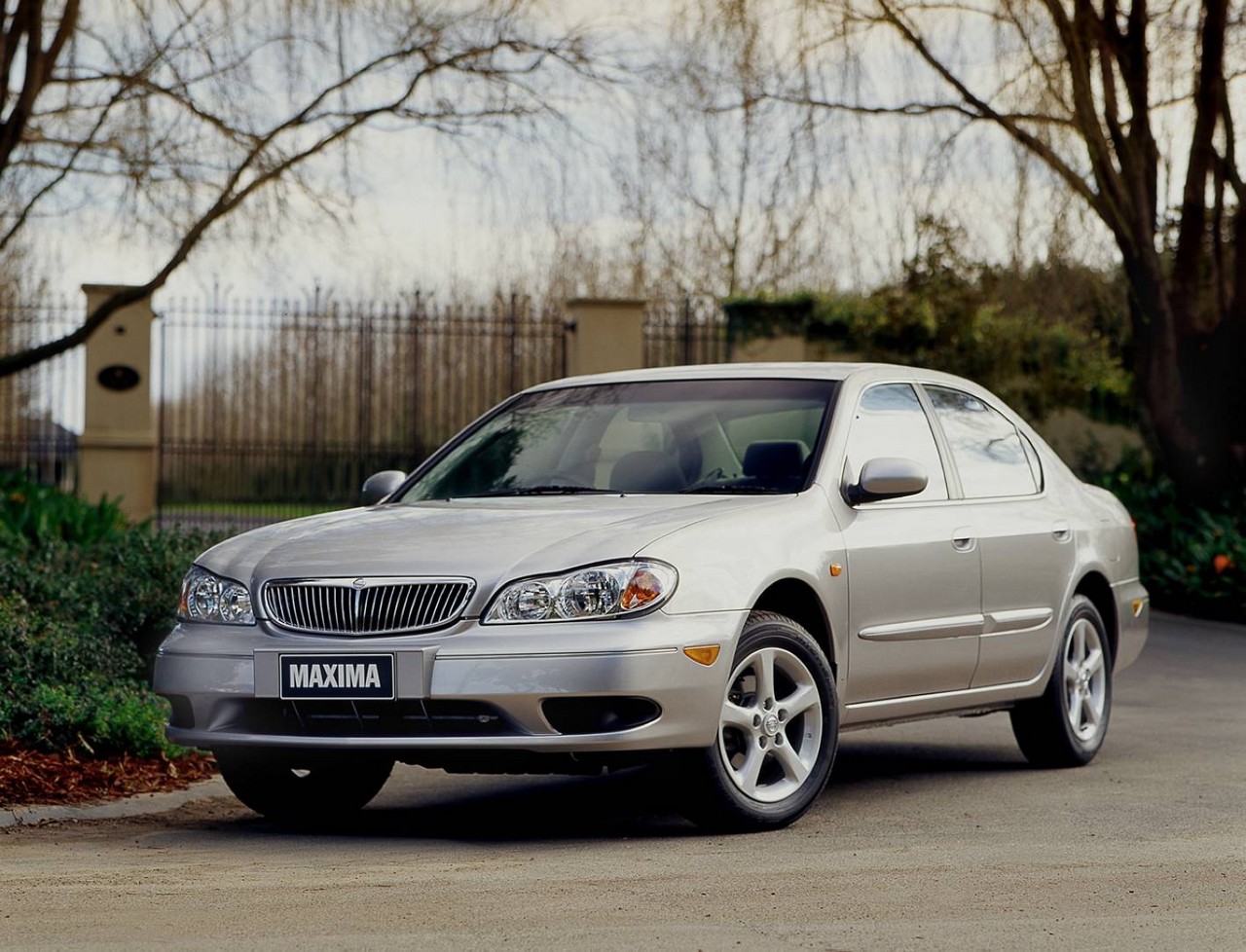
- Responsive and economical 3.0-litre V6 engine
- Refined automatic transmission
- Quiet, well-insulated cabin
- Competent ride/handling balance
- Steering is heavier than rivals
- Transmission can be slow to kickdown
- Uneven boot floor
- Noisy handbrake operation
Review: Nissan A33.I Maxima (1999-01)
Overview
Released in December 1999, the Nissan A33 Series I (A33.I) Maxima was a large, front-wheel drive sedan. Manufactured in Oppama, Japan, the A32 Maxima was powered by a 3.0-litre V6 petrol engine that was mated to a four-speed automatic transmission. As per the table below, the A33.I Maxima range consisted of S, ST and Ti variants.
VQ30DE engine
The A33 Maxima was powered Nissan’s 3.0-litre VQ30DE V6 petrol engine which had an aluminium block and heads, micro-finished crank journals and camshaft lobes, molybdenum-coated piston skirts and valve shims, double overhead cams (per cylinder bank), four valves per cylinder, Nissan’s Variable Induction System (VIS), digital knock control and a compression ratio of 10.0:1. Compared to the VQ30DE engine of the A32 Maxima , the A33 Maxima engine featured revised camshaft profiles and the introduction of a variable flow inlet manifold.
Dimensions
Compared to the A32 Maxima predecessor, the A33 Maxima was 150 mm longer (at 4930 mm), 10 mm wider (1780 mm), 20 mm higher (1435 mm) and had a 50 mm longer wheelbase (2750 mm).
Suspension
The A33 Maxima had MacPherson strut front suspension and multi-link beam rear suspension; for the A33 Maxima, the lateral link was relocated behind the rear axle.
| Variant | Engine | Trans. | Peak power | Peak torque |
|---|---|---|---|---|
| S, ST, Ti |
3.0-litre petrol V6 (VQ30DE) |
4sp auto | 157 kW at 6400 rpm | 291 Nm at 3600 rpm |
Safety equipment
Standard safety equipment for the A33 Maxima included dual front airbags, ABS and front seatbelts with pretensioners and load limiters; the Maxima Ti was also fitted with front-side airbags and active front seat head restraints.
Brakes
The A33 Maxima had 280 mm by 26 mm vented front brake discs and 278 mm by 9 mm solid rear discs.
Features
Standard features for the Maxima S included 15-inch alloy wheels, four speaker sound system with CD player, air conditioning, cruise control, a leather-wrapped steering wheel, 60/40 split and folding rear seats, remote central locking, power mirrors and windows, a height adjustable steering wheel, tinted windows, a trip computer and an immobiliser.
The Maxima ST was further equipped with 16-inch alloy wheels, a six speaker sound system with boot-mounted six-stack CD player, climate control air conditioning, velour upholstery and a power adjustable driver’s seat.
Beyond this, the range-topping Maxima Ti added leather seats, heated front seats, front fog lights and a power sunroof.
Review: Nissan A33.II Maxima (2001-03)
Overview
Released in September 2001, the A33 Series II (A33.II) was a minor update for the Maxima range. Inside, the A33.II Maxima featured a new ‘Drive Computer’, steering wheel and cruise control system. Visually, the A33.II could be identified by its updated Nissan logos.
| Variant | Years | Engine | Trans. | Peak power | Peak torque |
|---|---|---|---|---|---|
| S | 2001-02 | 3.0-litre petrol V6 (VQ30DE) |
4sp auto | 157 kW at 6400 rpm | 291 Nm at 3600 rpm |
| ST | 2001-03 | ||||
| ST-R | 2002-03 | ||||
| Ti | 2001-03 |
Features
Standard features across the range were extended to include five-spoke 16-inch alloy wheels; the ST and Ti were also fitted with an in-dash six-disc CD player.
October 2002: Maxima update
The A33.II Maxima underwent a minor update in October – the entry-level S variant was discontinued and an ST-R variant was introduced. As part of the update, a six speaker sound system with an in-dash six-disc CD player became standard across the range. Based on the ST, the ST-R was distinguished by its 17-inch alloy wheels, front fog lights, power sunroof, side skirts, rear spoiler and ‘gunmetal’ dash and door surrounds.
Related links
